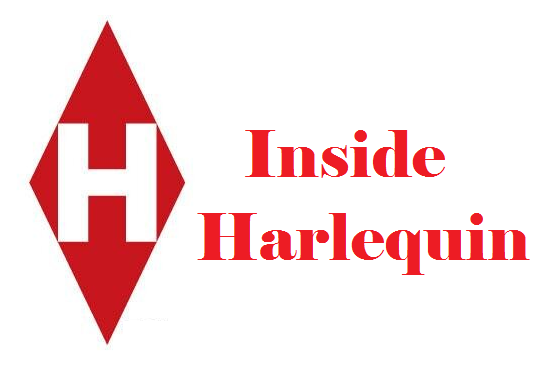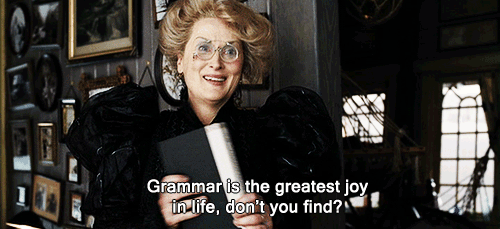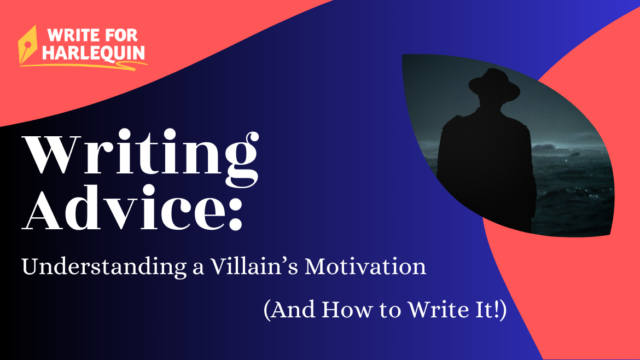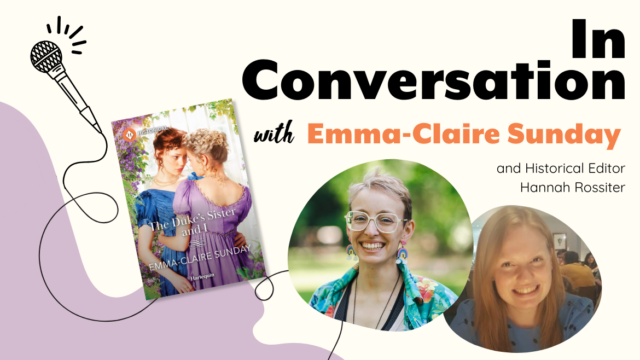
 In our final Inside Harlequin post, we talk to our colleague Taryn Ortolan, who gives us the nitty gritty on copyediting romance. At Harlequin, a book will go to the copy editor after it’s line-edited. After that, it’s on to Typesetting, who paginate the book and then a couple rounds of proofreading before it hits shelves!
In our final Inside Harlequin post, we talk to our colleague Taryn Ortolan, who gives us the nitty gritty on copyediting romance. At Harlequin, a book will go to the copy editor after it’s line-edited. After that, it’s on to Typesetting, who paginate the book and then a couple rounds of proofreading before it hits shelves!
What does a typical day look like for you, and what are the overall duties of your job?
My job as a copy editor is to ensure all text is error-free and internally consistent by the time it reaches publication. My day can vary quite a bit or not much at all, depending what I’m working on. If I’m copyediting a manuscript, most likely I’m devoting almost the entire day to that, for multiple days in a row, sometimes even a week or more, save time spent on email or administrative duties.
Another duty is copyediting the pages that appear in the front and back of the books—this could be a teaser excerpt, a Dear Reader letter, copyright pages, author bios, booklists, dedications, Q&A’s with the author, etc. For series romance, I work on a month’s worth of releases at a time, well in advance of the on-sale date. Copyediting the back cover blurbs is one of the highlights of my job because after the artwork, this is often the reader’s first encounter with the book. That little bit of text describing the story needs to be so focused—every sentence really counts to try to draw the reader in, and that distillation has its own copyediting challenges. For example, I look to minimize repetition, watch for imprecise or misleading phrasing, and ensure that the flow from one idea to the next is as smooth as possible.
![Dante's Marriage Pact: Harlequin comics by [Day Leclaire]](https://images-na.ssl-images-amazon.com/images/I/518LG2ia3sL.jpg)
![Twilight Vows : Harlequin comics by [Maggie Shayne]](https://images-na.ssl-images-amazon.com/images/I/51qynhAEUrL.jpg)
![Her Secret Pregnancy: Harlequin comics by [Sharon Kendrick]](https://images-na.ssl-images-amazon.com/images/I/51eqXhIkKWL.jpg)
Sometimes I’ll copyedit a Harlequin manga comic (Google this if you’re not familiar with our manga—I think you’ll thank me later!). And in between other projects, I handle PR and marketing materials (ads, blog posts, newsletters and so on). On a daily basis, I work with a number of different departments, fielding questions and querying a number of things, from pricing discrepancies and potential copyright issues, to recommending a substantive editorial change when needed. My team has a quick daily stand-up meeting to discuss our plan for the day, share information and bring forward issues. It’s an effective way to learn from each other and stay informed.
Where do you fit into the book publishing process?
My turn with a manuscript comes after the line edit and some preliminary formatting from the typesetting department. At this stage, the manuscript is still a Word document showing the previous changes by the editors. I use Track Changes to make my own edits and write comments to the editors, ensuring all the markup is visible.
Every manuscript travels with a support document as it moves through various departments, which gives all the basic info on the title as well as fields to add particulars about formatting, special instructions to other departments, or details the editor feels will help the copy editor do the best work possible. There’s also a word list, where I can make note of any unusual spellings, as well as a field to list characters and settings. Overall, it’s a useful way for all the departments working on the manuscript to communicate with each other and to have a record of the various stages in the life cycle of the manuscript.
What are some things you consider when working on a series book?
When I approach a manuscript, my “tool belt” is made up of the latest versions of Webster’s Collegiate Dictionary, the Chicago Manual of Style and Harlequin’s house style guide. These are our department’s go-to resources to ensure that we deliver the same high standard of care across all series. There are also some special guidelines for individual imprints (for example, such as what level of expletives, if any, is acceptable). Our house style guide is merely that, a guide—it’s my first stop for major style questions, but none of the “rules” are written in stone. As a copy editor, I’m looking to balance proper usage with the author’s voice. If an author has a very casual, conversational tone and is light on comma usage, for example, I’ll respect that throughout and suggest changes only where I think necessary for clarity or readability.
As I’m copyediting a series manuscript, I’m attending to many different layers, from the bare-bones mechanics of grammar and punctuation to higher-level issues like discrepancies in the plot or characterization. I also do a lot of basic fact-checking, and I’m always keeping an eye out for potential legal issues regarding trademarks and copyrighted materials.

What kind of support can an author expect from someone in your role?
I aim to always have the author in mind as I work, and to leave clear, respectful comments, explanations and queries throughout the manuscript to support his/her process. As a copy editor, I want authors to know that I appreciate everything that goes into a writer’s craft and I do not expect perfection on a technical level when I receive a manuscript to work on. Sometimes when I meet authors, they may say they’re not the strongest at knowing when to use a hyphen, or catching dangling modifiers, or insert-tricky-grammar-problem-here. But correcting those mechanical errors is part of my special skill set and I’m happy to act as the author’s safety net.
When it comes to higher-level errors, copy editors tend to be strongly solution oriented, so it’s never enough for me to merely point out an incongruity—I always want to offer a solution where I can. I try to suggest the least intrusive change, then hopefully the author will agree and that’ll save her a bit of work when she makes her alterations. Ultimately, though, it’s the author’s story and my main goal is that of support. That’s the message I always want to come through in my work, one of helpfulness and assistance.
Do you have any funny or memorable moments you could share with our readers about working on Series romance over the years?
Working on series romance is never dull, that’s for sure! But of course, there are issues that repeat in category fiction. Copyediting love scenes in series romance sticks out in my mind, but probably not for the reasons you’d think! Harlequin series authors really shine when it comes to writing steamy encounters. But as a copy editor, I need to take a step back when I’m reading and, on a certain level, remove myself from the intense passion to get down to the nitty-gritty logistics—who’s doing what to whom where and in what sequence?
There are a lot of moving parts, literally—clothes, appendages, props! It still makes me giggle when I add a comment to a manuscript such as “I can’t picture which way they’re facing here—does she have her back to him or is she upside down?” Or “Would he be able to get out of the bathtub with her legs around him and wrap a towel around her and carry her to the bed if he was shot in the leg earlier that day?” Often it’s not as complex as that, though—something more mundane like “I thought he already took his pants off two paragraphs above?” Consistency is important to me in my work, as I want to ensure that the reader isn’t distracted out of the characters’ moments of connection by superficial details…but I still feel a little goofy pointing these things out sometimes! The author probably thinks I’m a real stick-in-the-mud, but it’s part of my job to “sweat the small stuff.”
What upcoming Series books are you excited for or what have you worked on lately?
I love a good Christmas romance! In series, all things seem possible, but never more so than when you’ve got the magic of the season working in the hero and the heroine’s favor. Right now is the perfect time to get cozy with a winter romance, but the funny thing is, at Harlequin we work so far ahead in our production schedule that I’m often copyediting holiday stories in the spring and summer. It’s like Christmas in July every year.
As a Canadian girl, I can’t resist Michelle Karl’s Christmas Under Fire. The heroine is in British Columbia for a Canadian Christmas, but when there’s an attempt on her life, it’s up to the Mountie hero to help her! Throw in a looming snowstorm, and this sounds like the perfect blend of fire and ice. For something a little more lighthearted, I’d like to try The Maverick’s Christmas to Remember by Christy Jeffries. It’s got a classic amnesia trope, but there’s a clever twist—after falling off a ladder, a wedding planner believes a local rancher is her fiancé, but they’ve never actually met before! And finally, Witness on the Run by Susan Cliff doesn’t tout itself as a holiday love story per se, but this one’s got some pretty atmospheric romance set against the wintry tundra of Alaska, when a heroine on the run (after witnessing a murder) finds shelter in an ice road trucker. Susan Cliff usually writes about Navy SEALs (hey, I’m not complaining!) but I have a soft spot for everyday, unconventional heroes. Happy reading!
Thanks for giving us the low-down, Taryn! And a big thanks to our readers for following along on our Inside Harlequin series. It’s been a pleasure to bring these posts to you! What parts of the publishing process interest you most? We want to hear from you!






